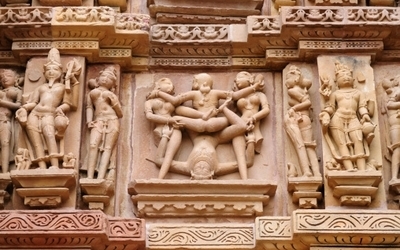Exploring the Spirituality of Sex
You might not know that in the period of the 10th and 11th centuries, there was an impressive series of so-called ‘sex temples’ built in the small Indian town of Khajuraho. These temples contained highly explicit and perhaps shocking images of erotic encounters. And what is more, these were put within structures that are supposed to be a beautiful symbol to God. It is clear that in this context, many people considered sex to be a path to spirituality. The people of Khajuraho constructed these temples to show the secret potential of sex to everyone.
Funnily enough, at the same time, many Western societies seemed to be doing all that they could to suppress sexuality and keep it behind closed doors – sex has always been something of a taboo subject for the West. For centuries the West went on without having a clue about the positive nature of sex and how it can be a boon rather than a burden on your life. As it was considered to be taboos, its power was undoubtedly highly restrained. Sex was always to be kept behind closed doors, sex was mysterious and dirty and it was something to be done always in privacy and never spoken of.
It took the revelations and revolutions of 1960s to bring Europe and the West around on the subject of sex. This was a subject that had been completely off limits for ages and they were now being suddenly opened up for discussion. Many people considered this to be a liberating breakthrough. Oppressed women found their sexual freedom. Even gay people, who previously had stayed “in the closet” for fear of public disapproval, no longer felt the need to suppress their feelings or hide the way that they really were.
Then things really started to take off. Once the dams had burst, sex rushed from the darkness past the light and into the floodlights and become a cultural obsession rather than a taboo. The cliche goes ‘sex sells’ and it was clear that this new found sexual freedom was going to be that really changed Western culture forever.
Now it is true that sex is everywhere – especially television. There are increasingly explicit imagery and images appearing in more and more shows on more and more channels. Nearly every television commercial, advertisement, billboard and music video either makes a reference to sex or shows explicit sexual imagery. The financial and moral barriers that were able to keep prostitution and porn films out of the public eye have been taken away by the arrival of so many commercial television channels and websites that want to use sex as a means of selling their shows.
But the freedom that the West has gained from the increased consumption of sexualised images is not, as was the case in Khajuraho, directed towards God or something spiritual – quite the opposite. The free discussion and use of sex seems s to be linked to advancing individualism and materialism rather than promoting spirituality in any way. Sex has become mechanical and purely a physical act – and worse still it has become a commodity to the point that we don’t really understand sex outside of its most base commercial realm.
The concept of the “darkroom”, where you can’t even see your sex partner, is clear proof that intimacy is no longer the basis of the sexual act – but rather anonymity. We have kept the cultural taboos of sex, but commercialised them. Humans appear to have become sexually-motivated machines or considered to be little more than instrument for someone else’s pleasure.


Comments are closed.